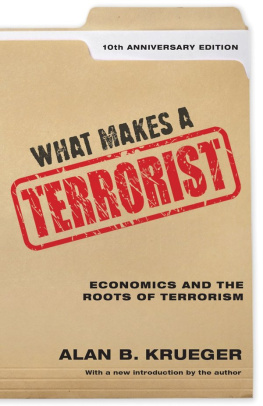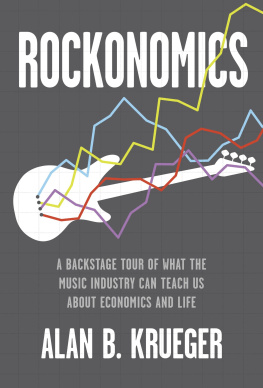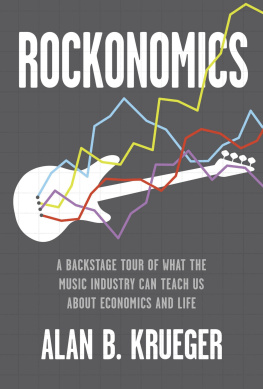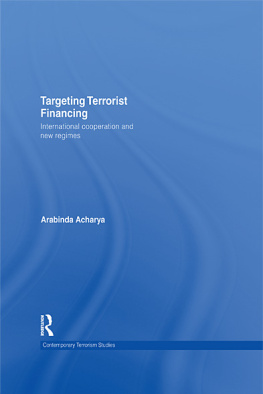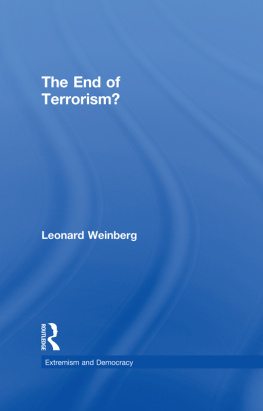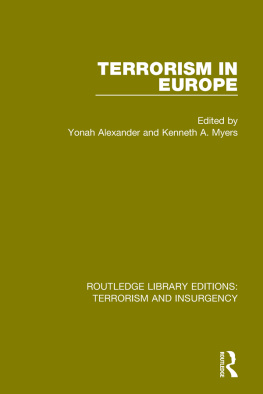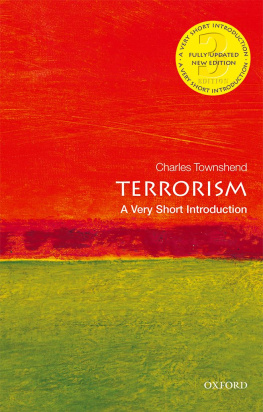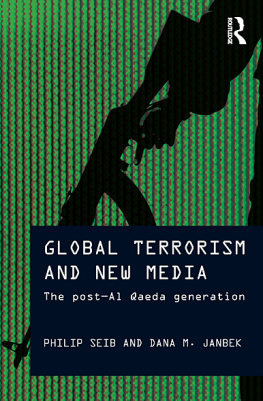Krueger - What Makes a Terrorist: Economics and the Roots of Terrorism
Here you can read online Krueger - What Makes a Terrorist: Economics and the Roots of Terrorism full text of the book (entire story) in english for free. Download pdf and epub, get meaning, cover and reviews about this ebook. year: 2017, publisher: Princeton University Press, genre: Politics. Description of the work, (preface) as well as reviews are available. Best literature library LitArk.com created for fans of good reading and offers a wide selection of genres:
Romance novel
Science fiction
Adventure
Detective
Science
History
Home and family
Prose
Art
Politics
Computer
Non-fiction
Religion
Business
Children
Humor
Choose a favorite category and find really read worthwhile books. Enjoy immersion in the world of imagination, feel the emotions of the characters or learn something new for yourself, make an fascinating discovery.
What Makes a Terrorist: Economics and the Roots of Terrorism: summary, description and annotation
We offer to read an annotation, description, summary or preface (depends on what the author of the book "What Makes a Terrorist: Economics and the Roots of Terrorism" wrote himself). If you haven't found the necessary information about the book — write in the comments, we will try to find it.
Krueger: author's other books
Who wrote What Makes a Terrorist: Economics and the Roots of Terrorism? Find out the surname, the name of the author of the book and a list of all author's works by series.
What Makes a Terrorist: Economics and the Roots of Terrorism — read online for free the complete book (whole text) full work
Below is the text of the book, divided by pages. System saving the place of the last page read, allows you to conveniently read the book "What Makes a Terrorist: Economics and the Roots of Terrorism" online for free, without having to search again every time where you left off. Put a bookmark, and you can go to the page where you finished reading at any time.
Font size:
Interval:
Bookmark:
What Makes a Terrorist
What Makes a Terrorist
Economics and the Roots of Terrorism
Lionel Robbins Lectures
10th Anniversary Edition
With a new prologue by the author
ALAN B. KRUEGER
PRINCETON UNIVERSITY PRESS
Princeton and Oxford
Copyright 2007 by Princeton University Press
Prologue to the Tenth Anniversary Edition copyright 2018
by Princeton University Press
Published by Princeton University Press, 41 William Street, Princeton, New Jersey 08540
In the United Kingdom: Princeton University Press, 6 Oxford Street, Woodstock, Oxfordshire OX20 1TR
press.princeton.edu
Jacket image courtesy of Shutterstock
All Rights Reserved
Original cloth edition published 2007
Fourth printing, and first paperback printing, 2008
Tenth anniversary edition, with new prologue, published 2018
ISBN: 978-0-691-17782-3
Library of Congress Control Number: 2017953925
British Library Cataloging-in-Publication Data is available
This book has been composed in Sabon, Gotham, and Scala Sans
Printed on acid-free paper.
Printed in the United States of America
10 9 8 7 6 5 4 3 2 1
To the memory of
Pat Tillman,
whose life exemplified
the courage and dedication
of American heroes
and whose death revealed
their shameful exploitation
CONTENTS
PROLOGUE TO THE TENTH ANNIVERSARY EDITION
One of the best pieces of advice I received when I was chairman of the Presidents Council of Economic Advisers (20112013) was from one of my predecessors, Edward Lazear, who advised me to stay in my own lane. To me, that meant avoiding becoming involved in national security issues, such as terrorism. I had enough on my plate dealing with the sluggish recovery from the Great Recession that this was not such a tall order. Although I was occasionally pulled into meetings on national security issues, especially involving the effects of the Iran sanctionsand I was invited to give a lecture at Langley on What Makes a Terroristfor the most part I followed Lazears advice and stayed in my lane of economic policy.
Now that I am back to being an the direction of the field.
Revisiting What Makes a Terrorist is also timely as there has been a spate of horrific terrorist attacks in several Western cities in recent months, including Paris, Nice, Manchester, London, Orlando, Berlin, Brussels, Barcelona, and Stockholm. England suffered its worst terrorist incident in more than a decade in the suicide bombing attack that took place outside an Ariana Grande concert in Manchester in May 2017. Terrorist attacks have been so frequent in Afghanistan, Iraq, Istanbul, and Israel that they have become almost routine news events, while new cities have become targets of attacks in the Middle East, including Tehran. When I gave a lecture on terrorism in Singapore, the reaction I received from the audience was that it is not a matter of whether the wealthy city-state will be a target of terrorism but when. Political leaders around the world are frequently responding to terrorist attacks and in some cases seeking to exploit such tragedies for political gain. Too many nationalist political leaders have turned to overheated xenophobic and anti-minority rhetoric to divide countries, which could provoke further hate crimes and intolerance. This is an environment where serious scholarly study of terrorism and hate crimes is more important than ever.
The most newsworthy conclusion of What Makes a Terrorist was that terrorists do not tend to come from underprivileged,
The profiles of terrorists are typically quite different from those of this light, it is not so surprising that extremists of all stripes who use violent means to pursue their geopolitical goals tend to be drawn from the well-educated elites.
Yet there have been a number of notable recent exceptions to this pattern, with several prominent attacks in Europe and the United States perpetrated by individuals with erratic employment histories, unexceptional educational achievement, and criminal records, often involving convictions for violent acts or petty crimes. Consider, for example, the case of Ahmad Khan Rahimi, who placed pressure bombs in locations in New York City, Elizabeth, and Seaside Park, New Jersey, in September 2016, injuring thirty-one people. Mr. Rahimi was a naturalized U.S. citizen whose parents emigrated from Afghanistan. After graduating from high school, he attended Middlesex County College, New Jersey, majoring in criminal justice, but he dropped out before completing his degree. Prior to carrying out his terror attacks, Mr. Rahimi worked in his familys fried chicken restaurant; he had been arrested and charged with aggravated assault and unlawful possession of a weapon for allegedly stabbing his brother in the leg. Or consider Mohamed Lahouaiej-Bouhlel, a Tunisian national living in France, who rented a nineteen ton cargo truck that he deliberately drove into a crowd of people celebrating Bastille Day on the Promenade des Anglais in Nice on the evening of July 14, 2016, wantonly killing eighty-six individuals and injuring 434 others. Mr. Lahouaiej-Bouhlel had committed five prior criminal offenses for violence or threatening behavior and petty theft, and he had been reported to the authorities for domestic violence. He had been employed off and on as a delivery truck driver. These terrorists would more accurately be described as thugs, lowlifes, and scoundrels rather than elites with geopolitical aspirations.
It is certainly possible that terrorism and terrorists are morphing. Terrorist acts are increasingly being franchisedloosely inspired and fomented by remote terrorist organizations rather than assiduously planned and carried out by them. Daniel Byman (2017) reports that, As the Islamic State emerged on the scene, both the United States and Europe saw roughly (much depends on exactly what is counted) twice as many successful Lone Wolf attacks in 2015 and 2016 as they did in the 201114 period. I argued in What Makes a Terrorist that both supply and demand factors push terrorists to be drawn from the ranks of the well off and well educated. On the supply side, as mentioned, educated people are more likely to hold stronger political views and seek to influence geopolitical events. On the demand side, terrorist groups screen terrorists and often select the elite to carry out their despicable acts to reduce their likelihood of being detected and raise their odds of success, particularly for high-value targets (Benmelech and Berrebi, 2007). But if those committing terrorist acts are increasingly only loosely connected to terrorist organizations, the screening process is less relevant, and involvement in terrorism is potentially open to a broader array of individuals. At the same time, terrorist acts may also be becoming less sophisticated. The use of cars, vans, and trucks to deliberately and wantonly assault innocent bystanders has become a more common form of terrorism, which requires little preparation, commitment, expense, or expertise. Enough prominent terrorist incidents have been carried out by people of low socioeconomic status and a history of violence to warrant a systematic reconsideration of the backgrounds of individuals involved in recent terrorist incidents. Perhaps the composition of the individuals drawn to terrorism is changing and becoming more pedestrian.
The evolving nature of terrorism exacerbates the difficult task of defining and measuring terrorism. In What Makes a Terrorist, I often relied on the State Departments official definition of terrorism: premeditated politically motivated violence, perpetrated against non-combatant targets by sub-national groups or clandestine agents, usually intended to influence an audience. Deducing the motivation and intention of people who commit acts of violence is even more of a challenge when it comes to lone wolves. These individuals may spout allegiance to various groups (which are sometimes diametrically opposed to one another) and have a long record of committing violent crimes that are wholly unrelated to any political motivation, but have no connection to a terrorist organization that ex post makes a dubious claim of credit for their acts. For researchers, it is important that the definition of terrorism be aligned with the objectives and method of the research. For example, in modeling the success or failure of plots, it makes sense to cast a broad net. For understanding changes in terrorist profiles over time, it is essential to be consistent in applying a comparable definition of terrorism over time, so that the composition of the sample is not changing because of changes in the boundaries of the definition.
Next pageFont size:
Interval:
Bookmark:
Similar books «What Makes a Terrorist: Economics and the Roots of Terrorism»
Look at similar books to What Makes a Terrorist: Economics and the Roots of Terrorism. We have selected literature similar in name and meaning in the hope of providing readers with more options to find new, interesting, not yet read works.
Discussion, reviews of the book What Makes a Terrorist: Economics and the Roots of Terrorism and just readers' own opinions. Leave your comments, write what you think about the work, its meaning or the main characters. Specify what exactly you liked and what you didn't like, and why you think so.

